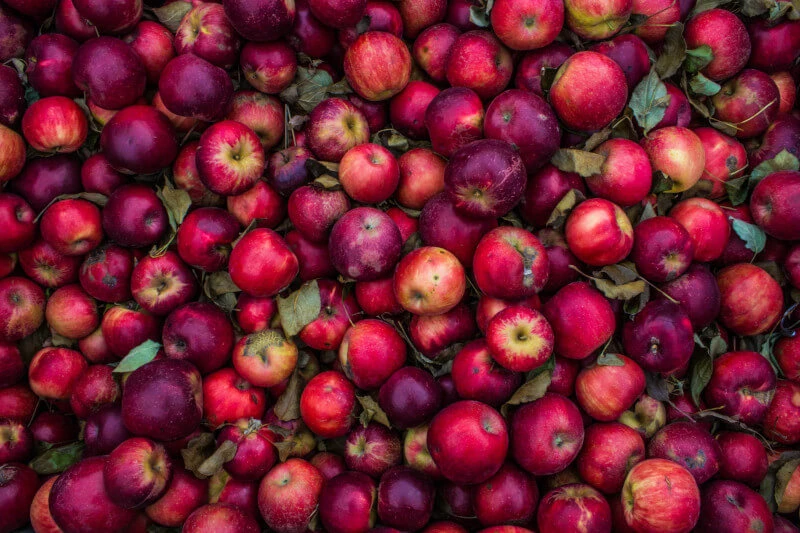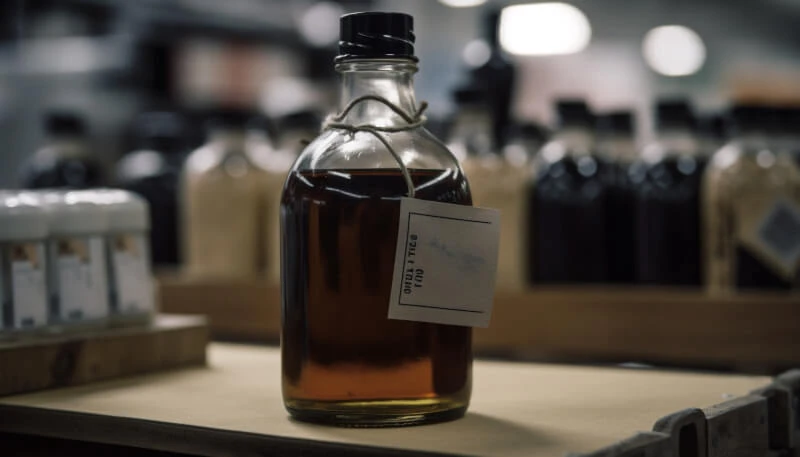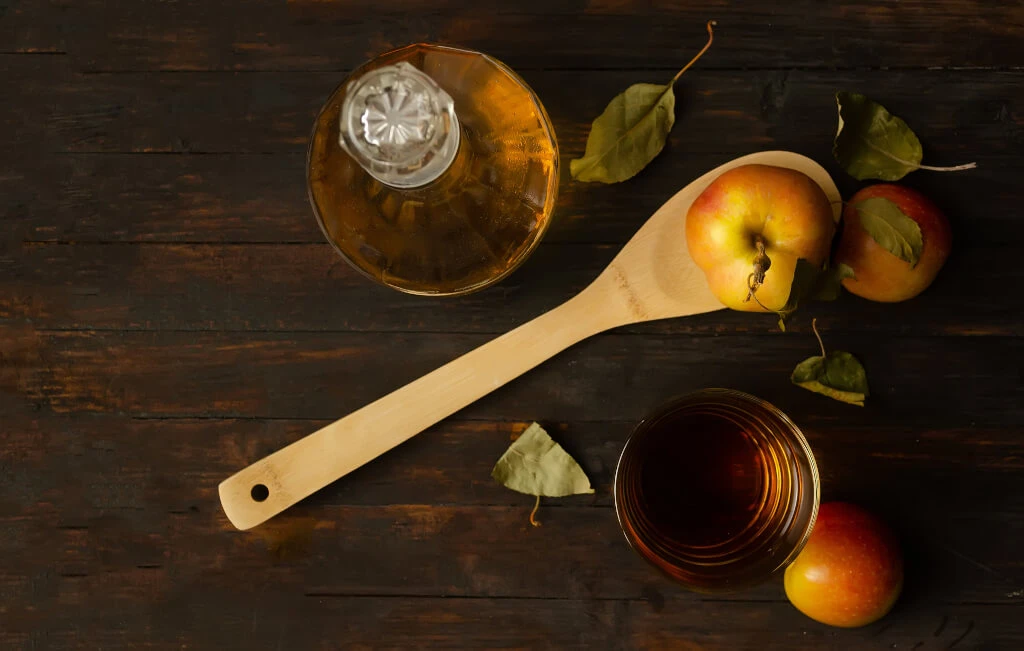Nestled in the northern regions of France, Normandy paints a scenic picture with its rocky coastlines and the iconic Mont-Saint-Michel. Come September, apple orchards sprawl across nearly 20,000 acres, setting the stage for the creation of a historic and revered liquor: Calvados.
Fast Facts About Calvados
Origin: Production is regulated within a specific zone in France’s Normandy region.
Primary Ingredients: Distilled from fermented apple cider and occasionally from perry.
Aging Process: Mandates at least two years of aging in French oak barrels, though many are matured much longer.
Global Presence: Approximately 30 of the 300 Calvados distilleries in Normandy export outside France
Vintage: Available in single-year or multi-year vintages, as well as blends of vintages.
ABV: Must contain at least 40% alcohol by volume.
Younger Calvados: Like Fine or VS, offer fresh apple flavors, while older variants bring forth baked apple and spice nuances.
Cocktails: Younger expressions shine in cocktails, whereas older ones are best relished neat.
What Is the Core Of Calvados?
Beneath its clear or amber hue, Calvados carries the rich essence of distilled apple cider. Though predominantly apple-based, some variants emerge from perry, which is cider’s pear counterpart. Guarding its authenticity and quality, an AOC (Appellation d’Origine Contrôlée) delineates the production parameters for Calvados, akin to the standards set for Champagne, cognac, and Camembert. While a two-year aging process in French oak barrels is a stipulation, several bottles owe their baked apple undertones to prolonged maturation periods.
Cécile Lecerf, the marketing beacon for Château du Breuil, highlights its omnipresence in French households, remarking, “Every French family has a bottle of Cointreau, Armagnac, and Calvados.”
Tracing back, cider distillation in Normandy finds mentions as early as 1553. Interestingly, the name ‘Calvados’ emerged in 1790, post the French Revolution, and isn’t confined to the region sharing its moniker. The liquor gained prominence in the latter half of the 19th century, with the rise of the first industrial distillery and the phylloxera crisis wiping out cognac grapes.
Guillaume Drouin, the master blender at Christian Drouin, reminisces about Calvados’ history, recalling its image as a drink for the laboring class. Often, farmers would blend it with coffee before intensive work stints – a ritual dubbed “Café Calva”. This practice soon transitioned from rural to urban settings, garnering popularity until the 1970s. “Many in France associate Calvados with Café Calva, a challenge faced by my father’s generation,” Drouin notes.
By the 1980s, producers unified to enhance Calvados’ standing, bringing in reforms to uplift both its image and quality. Marie Marois from Domaine Dupont draws a parallel between unreduced Calvados and “perfume versus an eau-de-vie”. The shift in production methods is evident, with many modern producers emphasizing this approach.
Beyond its rich history and flavors, Calvados holds an environmental card. The brandy boasts of being carbon-negative, courtesy of the apple and pear orchards cultivated for cider production. Stephanie Jordan from Avallen Spirits underscores its green footprint, stating, “Calvados is probably the most sustainable spirit because of our ingrained climate solution. We have a built-in advantage and don’t need external interventions to balance our climate footprint.”
Developing Calvados Ageing
While it’s a prerequisite for Calvados to age a minimum of two years, many choose to age their spirit far longer, enhancing the depth of its color and broadening its aromatic palette. With time, you can trace the evolution from a fresh apple aroma to a spectrum of baked apples, spices, and even caramelized notes.
According to Guillaume Drouin, Christian Drouin’s Master Blender, “Oxidation causes a gradual transformation in the Calvados’ apple flavors over time.” As Calvados ages, its fresh apple essence matures into the scent of ripe apples. Between 8-10 years, there’s a transition to baked apple flavors, and after 15-20 years, a range of dried fruits, caramelized apples, and apple jam become predominant.
Lecerf gives insight into how the barrels play a pivotal role in this evolution. A two-year-old Calvados aged in a large, previously used cask retains its freshness, limiting oxidative nuances. In contrast, a 15-year-old might flaunt pronounced notes of spices and ripe apples, attributing its character to the cask it’s aged in.
Calvados Production Process

- Selection and Harvesting: Calvados rely on specific apple and pear varieties that are tannic and smaller than typical store-bought ones. Over 200 apple and 100 pear species are viable candidates, chosen for their rich phenolic content.
- Pressing: Post-harvest, from late September to mid-December, the fruits undergo sorting, cleaning, and mashing. The pressed pulp produces the juice or “must”.
- Fermentation: The juice is fermented naturally in tanks for a minimum of 21 days (30 for Domfrontais appellation). Upon reaching an alcohol content of 4.5%, it’s primed for distillation.
- Distillation: Depending on the appellation, either alembic pot stills or continuous column stills are employed. This step condenses alcoholic vapors into a potent liquid.
- Aging: The resulting eau-de-vie is matured in French oak barrels for a set duration, with multiple transfers possible for flavor enhancement.
- Blending and Bottling: Cellar masters blend eau-de-vies from various barrels for the final product. Some Calvados varieties come from barrels of a specific vintage year. Pre-bottling, the blend is often diluted with distilled water to achieve a minimum 40% alcohol content.
Understanding Calvados Labels
The labeling on a Calvados bottle can offer insights into its age:
- Labels such as “Superb”, “Excellent”, “Reserve”, “You’ve Got Three Apples”, or “Three Stars” signify a minimum age of two years.
- “Retired” or “Senior” means the spirit has aged at least three years.
- Labels like “V.O.”, “VSOP”, or “Vieille Réserve” indicate a minimum aging of four years.
- Terms “Hors d’ge,” “XO,” “Très Vieille Réserve,” “Très Vieux,” and “Extra,” and those named after Napoleon suggest aging of at least 6 years.
Calvados By Different Region Appellations
- Calvados AOC: Spanning most of southern Normandy, this appellation is marked by its single distillation in column stills. Drouin comments, “The Calvados AOC profile varies more by producer than by the appellation, given its flexibility.”
- Pays d’Auge: Nestled in eastern Calvados, this region mandates double distillation in copper pot stills, resulting in smooth, nuanced Calvados. Drouin lauds its aging capabilities, praising the seamless integration of wood and spirit.
- Domfrontais: A petite appellation in southern Normandy, Domfrontais emphasizes pears, making up nearly 60% of the blend, distilled in column stills. Drouin highlights the crisp acidity brought by the pears, with the column still retaining this sharpness.
This is Eau De Vie De Cidre Comes in

While Calvados boasts strict appellations, there’s also the eau de vie de cidre, the equivalent to mezcal’s destilado de agave, which stands apart. If a Calvados is aged in barrels not native to France, like those for bourbon or scotch, it falls under this category. Yet, traditional maturation in ex-port and sherry barrels, readily available from the neighboring Port of Havre, keeps the spirit’s authenticity intact.
Marie Marois of Domaine Dupont champions creativity within this category, suggesting an amendment to the AOC rules. She sees potential in introducing unaged eau de vie de cidre, which, due to its vibrant flavor profile, makes a compelling ingredient in cocktails.
Fast Fact About Blends VS. Vintages
Just like wine and cognac, Calvados can be produced from various eau-de-vie from different years or the same harvest. Drouin, a connoisseur of vintages since the 1930s, elucidates, “Each blend boasts a distinct aromatic flavor profile aimed at consistency. Yet, when it comes to vintages, we prefer variety.” He adds that the aging process might involve creative choices, such as using repurposed Sauternes barrels for a specific vintage to enhance certain aroma profiles. As Calvados ages, oxidation plays a crucial role, subtly transforming its apple flavors.
Tips from the Experts on How You Serve Calvados?
Often savored after dinner or as a mid-meal palette cleanser, Calvados finds kinship with cognac in its serving style. Older pours of Calvados perfectly complement chocolate, apple pies, and creamy Norman cheeses like Camembert. Meanwhile, Guillaume Drouin recommends pairing younger variants with chilled seafood or smoked fish.
For those keen on mixology, Calvados offers versatility. “When I work with Calvados in cocktails, I seek out that fresh apple flavor without too much oak,” comments Bay Area bartender Jacques Bezuidenhout. Expressions with a touch of extra wood can easily redefine classics like the Jack Rose or Sidecar.
Jordan of Avallen Spirits echoes similar sentiments, suggesting the use of younger, fruitier expressions in highballs and sours. In a nod to the iconic Café Calva, she recommends trying Calvados in a Vieux Carré, which traditionally uses cognac, or introducing it to an Espresso Martini. As she aptly puts it, “Fruit and coffee is a heavenly pairing.”
With its roots deep in French heritage, Calvados offers a blend of tradition, taste, and environmental consciousness. Its transformation from a laborer’s comfort to a connoisseur’s delight showcases the adaptive and evolving spirit of this timeless apple brandy.

